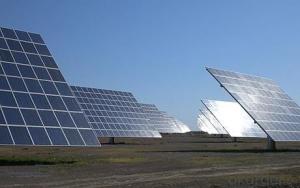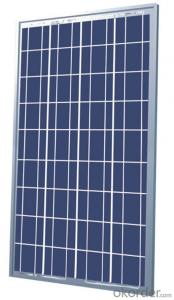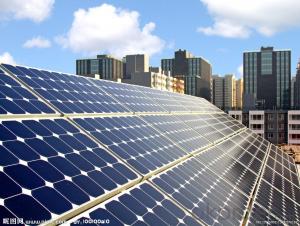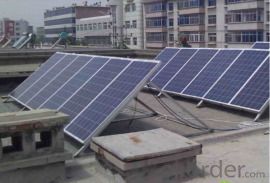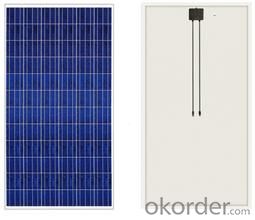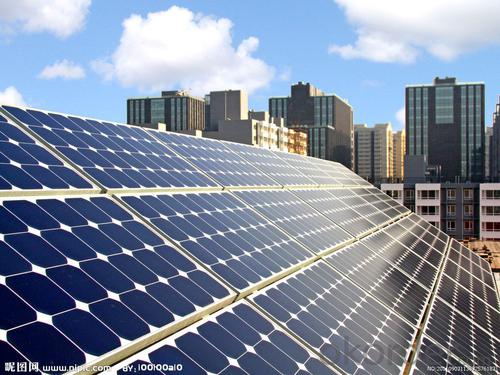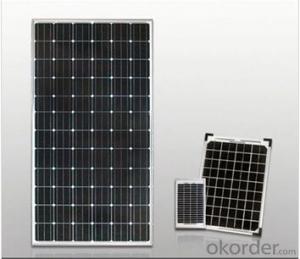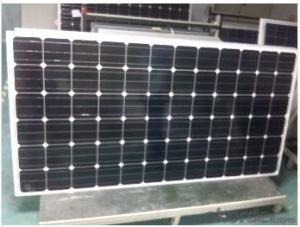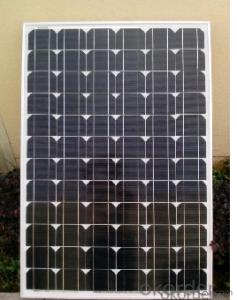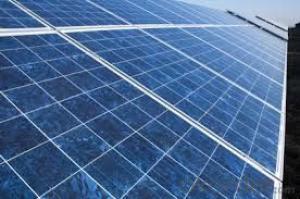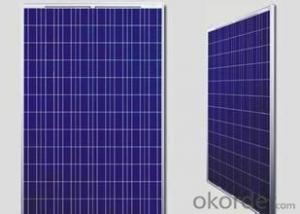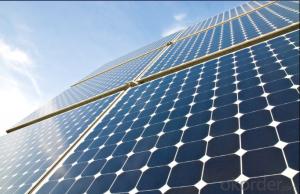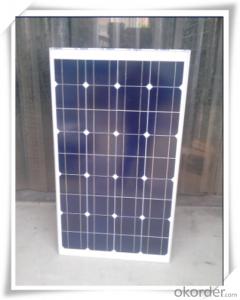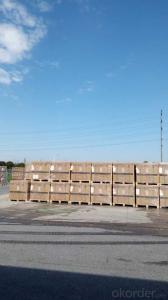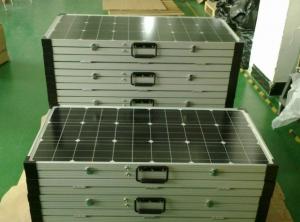CNBM Polycrystalline Solar Panels for Rooftop Systems - Bend Oregon
- Loading Port:
- Shanghai
- Payment Terms:
- TT OR LC
- Min Order Qty:
- 1 pallet
- Supply Capability:
- 10000000 pallet/month
OKorder Service Pledge
OKorder Financial Service
You Might Also Like
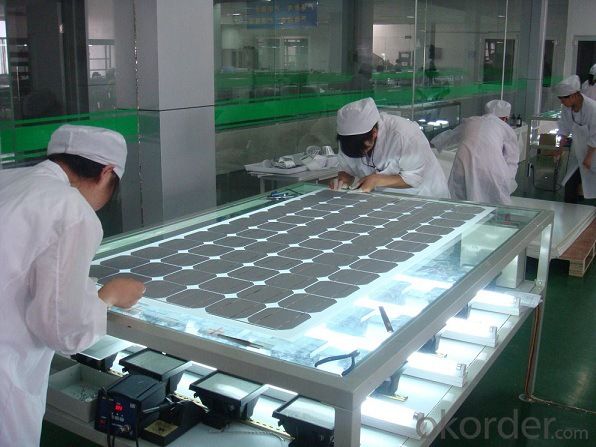
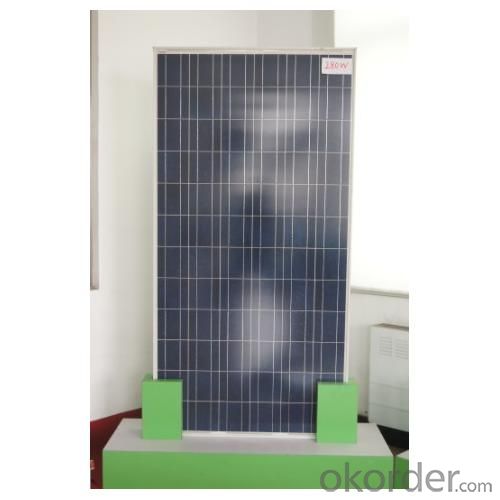
Description:CNBM Polycrystalline Solar Panels for Rooftop Systems
Characteristics:
I.Solar Cell : High efficiency crystalline solar cell. Even if under the weak light, the solar module can produce maximum power output.
II.Tempered glass (toughened glass): Anti-reflecting coating and high transmission rate glass increase the power output and mechanical strength of solar module.
III.EVA and TPT: Using high quality EVA and TPT to prevent destroying and water.
IV.AI frame: Without screw, corner connection. 6 holes on the frame can be installed easily.
V.Junction box: Multi function junction box with water proof.
VI.Long lifetime: ≥25 years; Less power decrease.
VII.Good performance of preventing from atrocious weather such as wind and hails.
VIII.Resisting moisture and etching effectively, not effected by geology.
IX.The certificate issued by international authority: UL, TUV, IEC, VDE, CE.
Quality and Safety
1. Rigorous quality control meets the highest international standards.
2. High-transmissivity low-iron tempered glass, strong aluminium frame.
3. Using UV-resistant silicon.
4. IS09001/14001/CE/TUV/UL
Warranties
1. 10 years limited product warranty
2. 15 years at 90% of the minimal rated power output
3. 25 years at 80% of the minimal rated power output
Technical date :
ITEM NO.: | Poly 156*156 cell ,60pcs . Power range from 230Wp-260Wp | ||||||
Maximum Power(W) | 230 | 235 | 240 | 245 | 250 | 255 | 260 |
Optimum Power Voltage(Vmp) | 29.4 | 29.5 | 29.7 | 30.1 | 30.3 | 30.5 | 30.7 |
Optimum Operatige Current(Imp) | 7.83 | 7.97 | 8.08 | 8.14 | 8.25 | 8.37 | 8.48 |
Open Circuit Voltage(Voc) | 36.7 | 36.8 | 36.9 | 37.1 | 37.3 | 37.5 | 37.7 |
Short Circuit Current(Isc) | 8.52 | 8.59 | 8.62 | 8.65 | 8.69 | 8.73 | 8.78 |
Solar Cell: | 156*156 Poly | ||||||
Number of Cell(pcs) | 6*10 | ||||||
Brand Name of Solar Cells | JA Cell, Bluesun Cell | ||||||
Size of Module(mm) | 1650*992*40/45/50 | ||||||
Cable & Connector Type | Pass the TUV Certificate | ||||||
Frame(Material Corners,etc.) | Aluminium-alloy | ||||||
Back sheet | TPT | ||||||
Weight Per Piece(KG) | 19.5KG | ||||||
FF (%) | 70-76% | ||||||
Junction Box Type | Pass the TUV Certificate | ||||||
Tolerance Wattage(e.g.+/-5%) | ±3%, or 0-3% | ||||||
Front Glass Thickness(mm) | 3.2 | ||||||
Temperature Coefficients of Isc(%) | +0.04 | ||||||
Temperature Coefficients of Voc(%) | -0.38 | ||||||
Temperature Coefficients of Pm(%) | -0.47 | ||||||
Temperature Coefficients of Im(%) | +0.04 | ||||||
Temperature Coefficients of Vm(%) | -0.38 | ||||||
Temperature Range | -40°C to +85°C | ||||||
Surface Maximum Load Capacity | 5400Pa | ||||||
Allowable Hail Load | 23m/s ,7.53g | ||||||
Bypass Diode Rating(A) | 12 | ||||||
Warranty | 90% of 10 years, 80% of 25 years. | ||||||
Standard Test Conditions | AM1.5 1000W/ 25 +/-2°C | ||||||
Packing | carton or pallet | ||||||
1*20' | 14 Pallets / 316pcs | ||||||
1*40'STD | 25 Pallets / 700pcs | ||||||
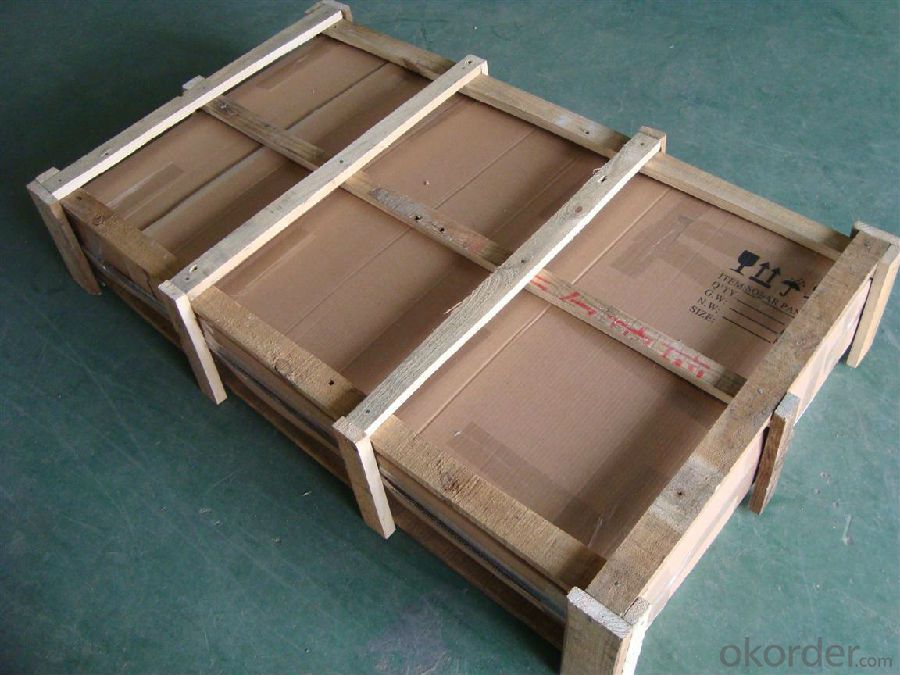
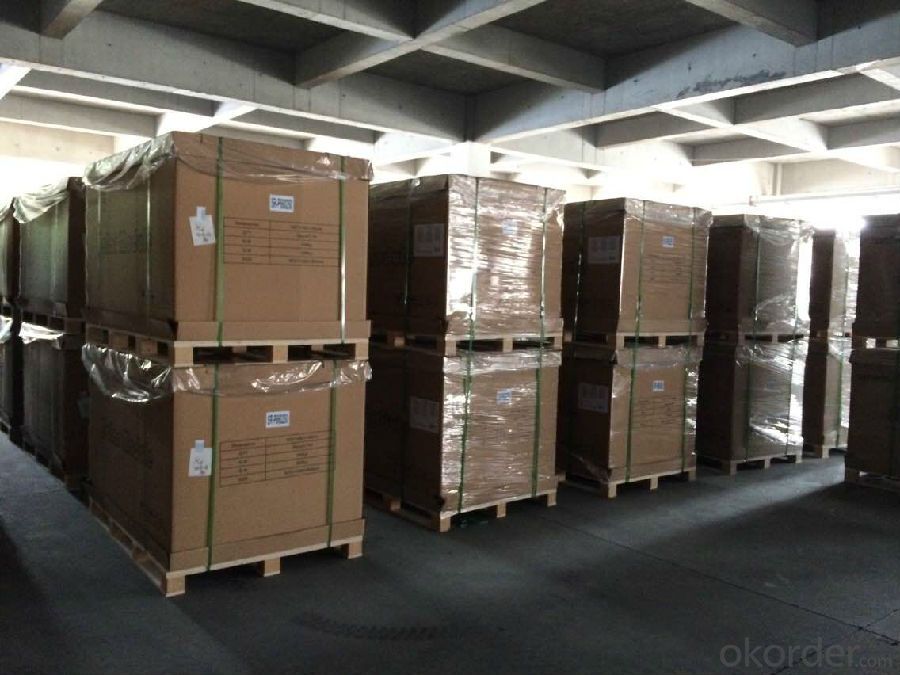
FAQ
I..Will you focus on the safety of the goods during transportation?
Yes, Safety of the cargo is the primary element that we would consider on transportation.
II..How would guarantee the quality will meet the requirements of your clients?
Before shipment, we will have inspection for each batch of goods.
III..What certificates do you have?
IEC,UL,TUV,CSA,etc.
IV..Can you do OEM according to clients’ requirements?
Yes, we have our own brand while we can provide OEM service.
- Q: Can solar panels be installed in areas with high humidity?
- Yes, solar panels can be installed in areas with high humidity. High humidity does not significantly affect the performance or efficiency of solar panels. However, it is important to ensure regular maintenance and cleaning of the panels to mitigate any potential issues caused by dust, dirt, or moisture buildup.
- Q: I remember hearing somewhere that solar panels may attract light rays away from plants thus having a potentially negative effect on the plants. I can't remember where I heard it but I'm curious if there is any truth to it.
- if that were true, then anything that absorbs the suns rays do the same thing. Doesn't make any sense to me.
- Q: Can solar panels be installed on a telecommunications tower or antenna?
- Yes, solar panels can be installed on a telecommunications tower or antenna. This can help provide a reliable and sustainable source of energy for powering the tower's equipment and reducing its dependence on traditional energy sources.
- Q: I have made a 5v dc 52watt solar panel and I going to be trying to charger 4 2v dc 55ah batteries. I get about 6 hours of sun on my panel. Spec below, is that a big enough panel to charge the batteries???I have 30 3x6 solar cells wired together Cell Specifications: (Watts): .75 Wp (Amps): 3.5 Imax (Volts): 0.5 V max which is where I got my 5g 52watt max (if math is wrong plz tell me) The Battery type: 2Volt 55.0ah NB Sealed Lead Acid Battery. I am using a mppt solar charger.
- Technically, any solar panel can charge any battery, but it would take quite a long time do do so if it is a large battery. If you are aware of the voltage and either amp or watt rating of the unit that is usually used to charge the battery, the solar panel should have a similar power output to that charger to work well. amps and watts are quite similar, and can be converted with this simple formula: W=watts; V=volts; A=amps; W/V=A; V*A=W; When charging batteries, it is always wise to use less amps than needed, and roughly the same voltage as the battery being charged. The less amps used to charge batteries means the battery will take longer to charge but will last a lot longer in the long-term. Your solar panel should be sufficient to charge the battery, but you should test charge it to see if it works well. I recommend using a multimeter to check the batteries voltage every couple of hours. Once the battery reaches 2v, it should be fully charged. You should also check the amps in case they are not at the expected value (take caution when checking amps with a multimeter, when i do it i always end up melting my multimeter leads). The battery should be fully charged from anywhere between 6-48 hours. if it is charging faster, the solar panel has too much power. if it doesn't charge in this time frame, the solar panel is not powerful enough.
- Q: Are solar panels worth the investment?
- Yes, solar panels are worth the investment. They offer long-term financial savings by reducing electricity bills and the potential for selling excess energy back to the grid. Additionally, they contribute to a cleaner and more sustainable future by reducing carbon emissions and dependency on fossil fuels.
- Q: Can solar panels be used to power a mining operation?
- Yes, solar panels can be used to power a mining operation. Solar energy can be harnessed and converted into electricity to meet the power needs of a mining operation. By installing a solar panel system, mining companies can reduce their reliance on fossil fuels, lower energy costs, and minimize their carbon footprint. However, the feasibility of using solar panels for mining operations would depend on various factors such as the energy requirements of the mine, available sunlight, and the size of the solar panel system needed to generate sufficient power.
- Q: Photo-Voltaic solar panels are very expensive. Most of a home's energy needs are for heating water, heating and air-conditioning. All of these can be met with thermal solar collectors which are much less expensive. The thermal solar panels would heat water stored in a hot water tank which then can be used as hot water, to heat the home, or as the heat source to a Lithium Bromide Absorption chiller to air-condition a home. With the base line needs met without expensive panels and without inefficient energy conversions, only a small Photo-Voltaic array would be needed for the remaining power needs and since those needs are variable, there would still be power to sell to the grid.
- Just read some of the other posts and I am surprised at the answers. Solar thermal systems typically have a payback of less than seven years on residential system without the tax break. A complete system can be installed for about 5k or less. Compare that to 20k or more for PV with a fifteen to twenty year pay off. Each home and area is different so a site evaluation must be done for exact figures and pay offs. I am going off my own experience in my above statements Flat panel collectors work well in most areas for DHW. Evacuated tubes often run too hot which works well for some applications or high usage. Heating water is the single greatest energy usage other than space heating and cooling. It often surpasses the two above systems based on its widespread usage(every houshold in USA has one) and its the amount it is used(24/7@365) The amount of energy spent to heat water is by order of magnitude the greatest number out there. Having a solar thermal system providing hot water for a average American household is equivalent to taking 40,000 miles off the freeway in a car every year. The BTU's required to heat the water is huge. So why is this more developed cheaper and more efficient technology behind PV in awareness? Natural Gas the number one choice for heating water is cheap. It's by product is invisible and misunderstood. What I find fascinating is if you look at the increase in Natural Gas vs Electricity you will be surprised by how much it has jumped in the last seven years. It is not talked about nearly as much as electricity It does not get the same level of press that PV does. So in short the answer is cheap Natural Gas prices and public perception of this product have kept it off the list of many that are turning toward the green trend. It is less sexy than watching your meter spin backwards. It is the best improvement at the best cost except for conservation which is and was the most cost effective energy saving that can be employed
- Q: Solar Panels not working very well, they have faded. Is there any paint or anything else I can do to restore them? Thanks Eileen
- Unfortunately Eileen the panels are bound to fade as its par for the course. Over time much like everything else (from an AC condenser to your knees and hips) everything starts to go south. When did you purchase and install your panels? If this was done within the past few years then something is definitely wrong, and you should have the manufacturer and installer come back and replace the panels....on their dime of course. Is the warranty on your panels still in effect? If so then its definitely something that they have to come back and take care of. There is a company I know of called Sun Electronics that has a 20 year warranty on their products, so if its worth anything you might want to buy your new panels/system from them. The panels around today are more efficient than those of years past, and with the cost coming down due to economies of scale and the tax incentives you might want to consider getting a new system. Sorry to let you down though Eileen!
- Q: I am starting to think about solar panels as an option for my home. I have done some research on panels, to be honest its all very confusing. There are many different panels some with 60 watts some all the way up to 20 watts. My household currently uses about 2700 to 3400 kWh every two months. So based off of my power usage maybe you can answer some of the following questions:What kind of panels should I be looking at?Which panel manufacturers give the best bang for the buck (reliable/affordable)?Anything else I should be concerned about?I am just starting out in educating myself on solar power so please excuse me if I sound very naive. Any information that you may have will be helpful. Thanks in advance.
- I'm not an expert, but I recently went through the process and now have a system on my home. I got 3 quotes from 3 licensed contractors and they all seemed to be about the same, the prices seemed to be based on the amount of energy they produced. In CA and I'm sure everywhere else they are tested by an independent agency which rates the output of the panels. You seem to have similar usage as my house, I got a 3.75kwhdc unit, it isn't expected to eliminate my bill, but it should reduce it by quite a bit. I've only had it for a few months and it took me from about 45 kwh per day to around 0. I know I'll have lower output in the winter, but my usage is lower in the winter as well. I decided on this size unit to maximize my rebates and I can take advantage of my utilities rebates when I add to the system in a few years. The difference between panels seemed to be how big they were. Some systems can be twice the size and produce the same amount of energy. I put a couple links below that I found helpful. The roseville pv buy down program has some great links that give information about specific systems.
- Q: Why does the new 200 Toyota Prius have solar panels at the top of the vehicle?
- Hi, the solar powered-venting system is not air conditioning, it is simply a venting system to attempt to balance the interior temperature of the Prius with the outside temp when the interior of the Prius is at least 68 degrees. This is an optional system and is available as a stand-alone option for $800.00 or $3600.00 in conjunction with the navigation system. The solar roof is integrated into a full function sunroof, but the sunroof can be opened without using the solar venting portion. There is a separate portion of the system that will allow the driver to turn on the electric AC for three minutes, if there is enough stored charge in the nickel metal hydride (NiMH) hybrid battery. The AC is not linked to the lead acid battery, and is run by the NiMH only, not the gas engine. The NiMH and lead acid are two separate power systems. The solar panels do not power anything else in the Prius and do not boost the power to any of the systems. The solar venting does permit less energy from the NiMH to be utilized for AC at the next startup. For trivia, the EPA will not allow Toyota to install the solar venting system on Prius with the top package V (#5). The EPA feels the Prius is too top heavy with all the additional sensors required for the radar guided cruise control and all the other high tech components in the top end option package, just FYI.
Send your message to us
CNBM Polycrystalline Solar Panels for Rooftop Systems - Bend Oregon
- Loading Port:
- Shanghai
- Payment Terms:
- TT OR LC
- Min Order Qty:
- 1 pallet
- Supply Capability:
- 10000000 pallet/month
OKorder Service Pledge
OKorder Financial Service
Similar products
Hot products
Hot Searches
Related keywords
